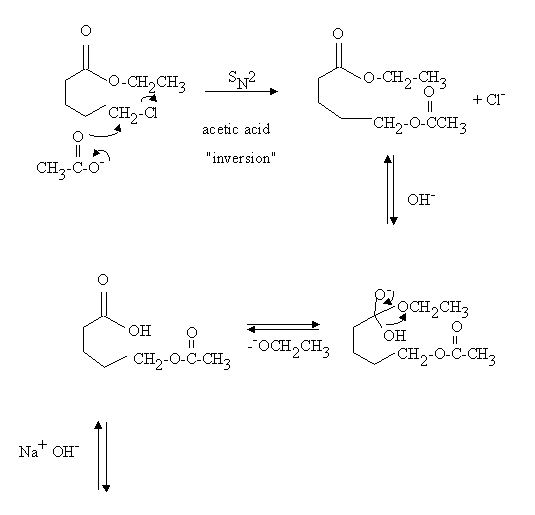
Chem2O6
- 1997/98| Problem Set #12 | Answers | February 6, 1998 |
Carboxylic Acid Derivatives
Ege has reams of exciting problems at the end of chapters 14 and 15. Try tackling, for example, the following.
14.41, 14. 39
15.21, 15.22, 15.25, 15.32, 15.34, 15.43, 15.44.
1.In addition you need to practice writing mechanisms. Take the transformations shown on the bottom of page 643 and top of page 644 (ethyl 5-chloropentanoate to the lactone of 5-hydroxypentanoic acid) and show the mechanism of each step.
Answer:

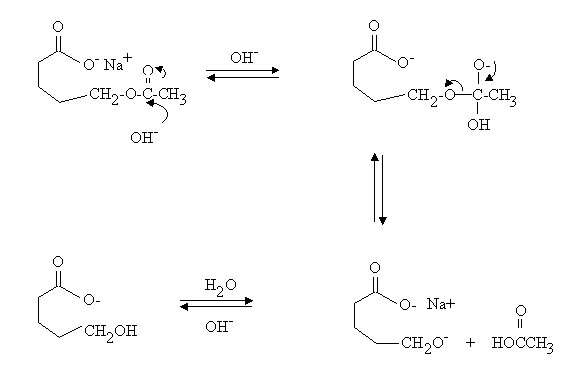
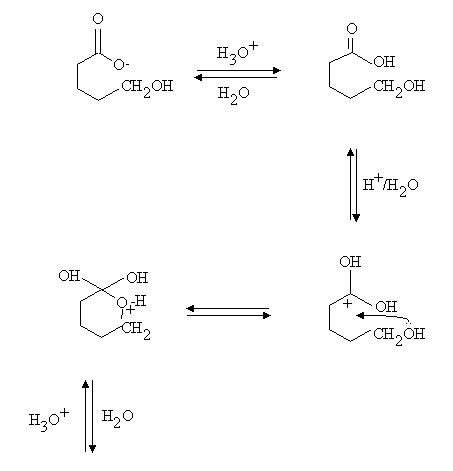
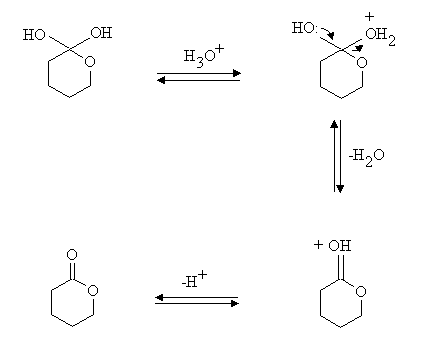
2. How would you make the lactone of 5-hydroxypenatanoic acid from cyclopentene?
Answer:
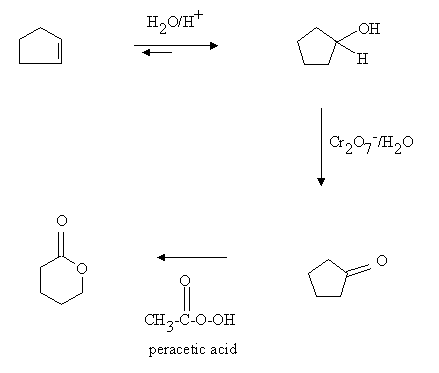

3. This problem should be of interest to the bio-types in the course, the environmentally concerned as well as car buffs. It involves the formation of a synthetic lubricant component from a natural oil.
Oleic acid can be derived from a natural oils. In what form does it occur and what reaction is required to liberate oleic acid?
Oleic acid can be reacted to form the two products A and B shown below. What reagent would you use for this? What are the names of the two products?
The two products A and B are separated and then converted to the acids C and D, respectively. How would you carry out these transformations. Name C and D.
Diacid D can be reacted with 1-tridecanol to form the diester. Similarly, C can be reacted with E to form a tetra ester. How would you carry out these transformations?
These esters are used as components in synthetic lubricants. They are mixed with other components to form a lubricant which is said to give better engine wear. They can also be recycled easily.
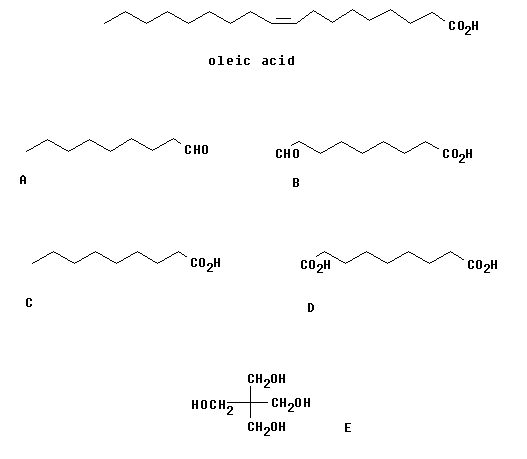
Answer:
Step 1: Ozone followed by reductive workup using Zn or CH3SCH3
Names:
A: nonanal
B: 9-oxo-nonanoic acid
Step 2: oxidation, variety of oxidizing agents eg., Cr2O7-
Names:
C: nonanoic acid
D: 1,9-nonane-dioic acid
Step 3: Ester formation; use acid catalyst
4. This question is intended for review and to help you study the material
Transformations between the oxygen containing functional groups
Fill in the reagents and conditions needed to effect the various transformations
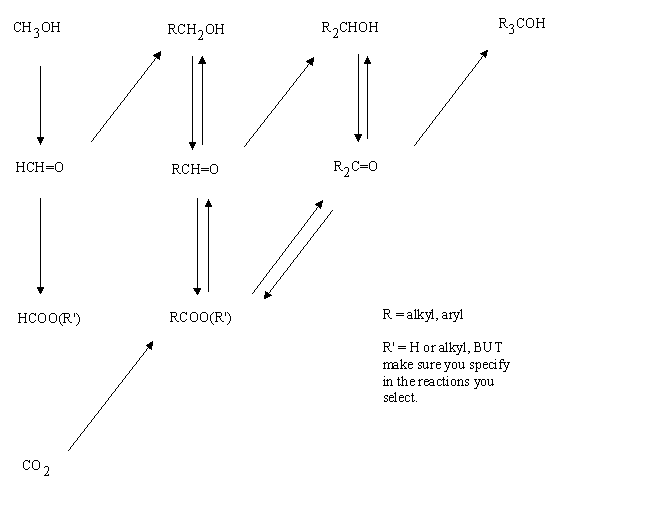
Answer:
JUST FOR REVIEW - FILL IN ON YOUR OWN
| Go to: | Instructions for Printing this Document Chem2O6 Problem Sets & Answers Chem2O6 Home Page. |
06 feb 98; jp